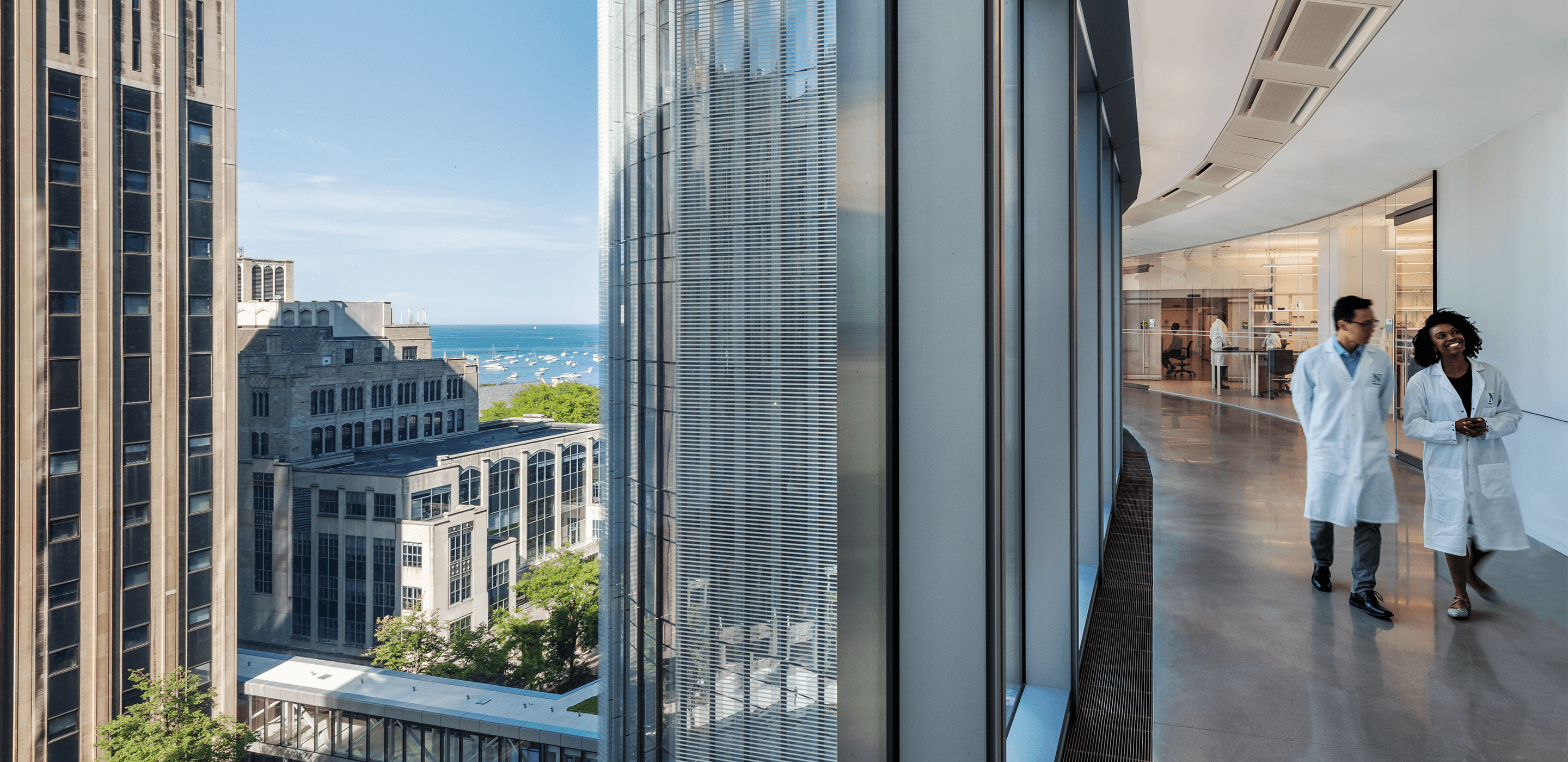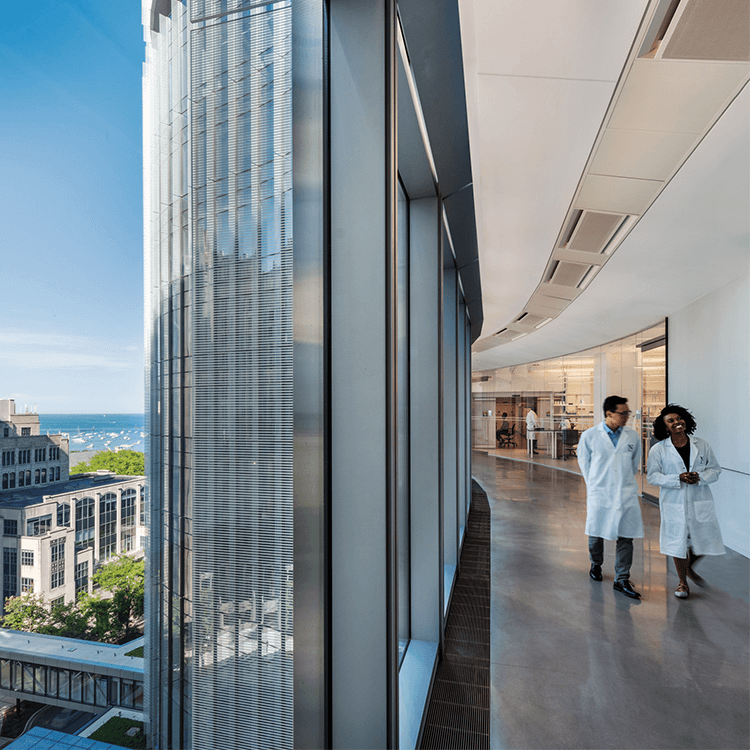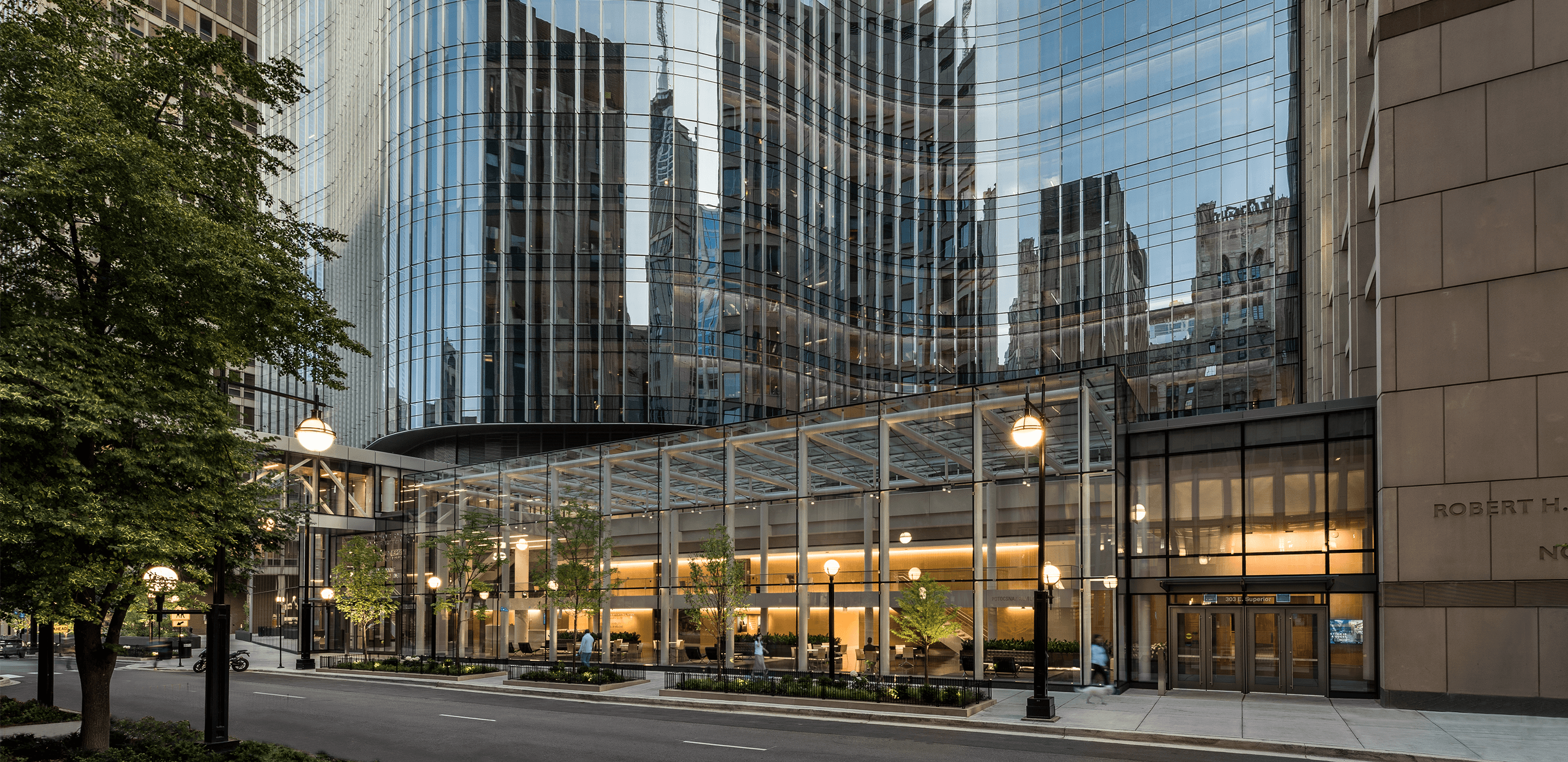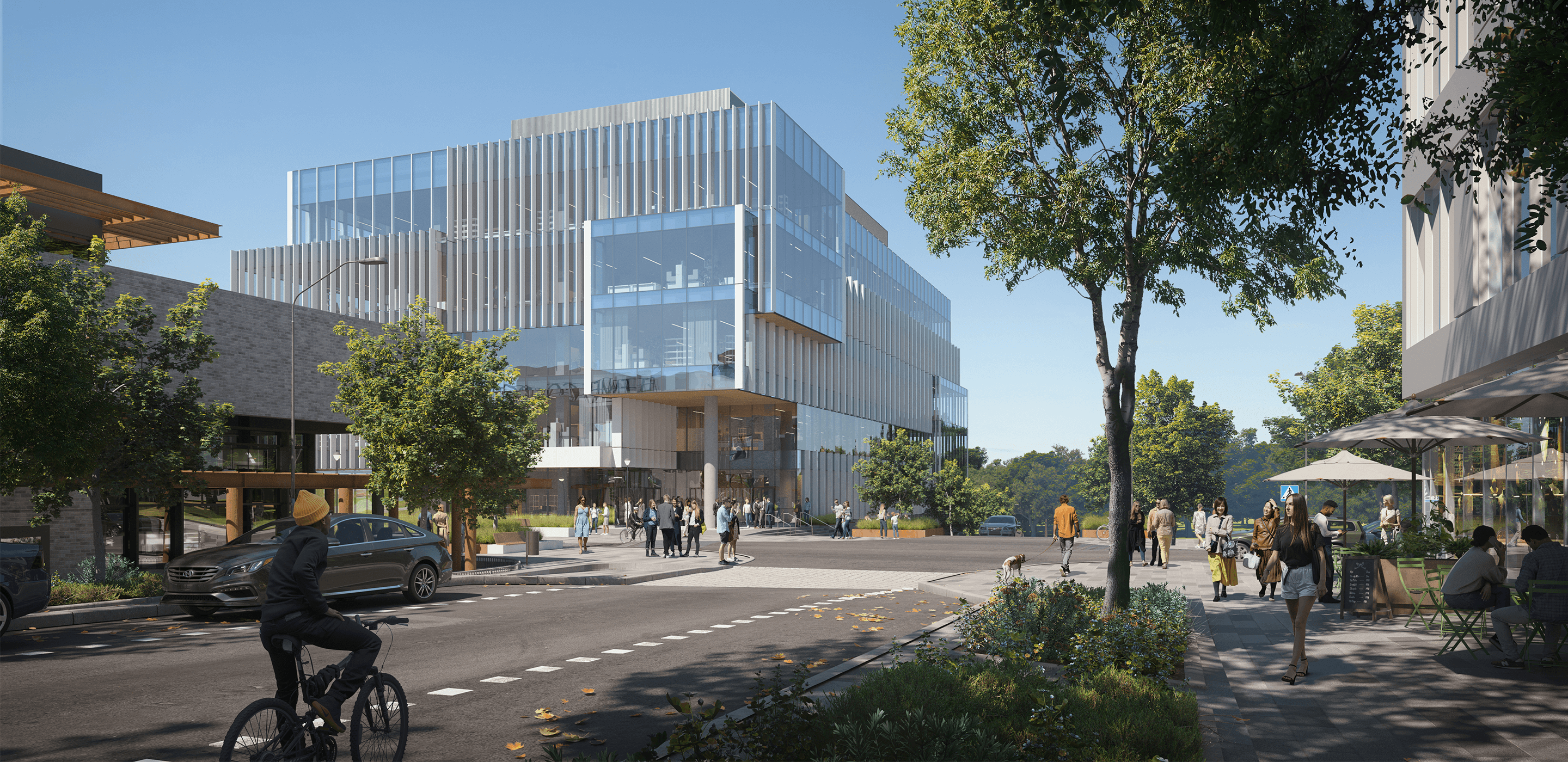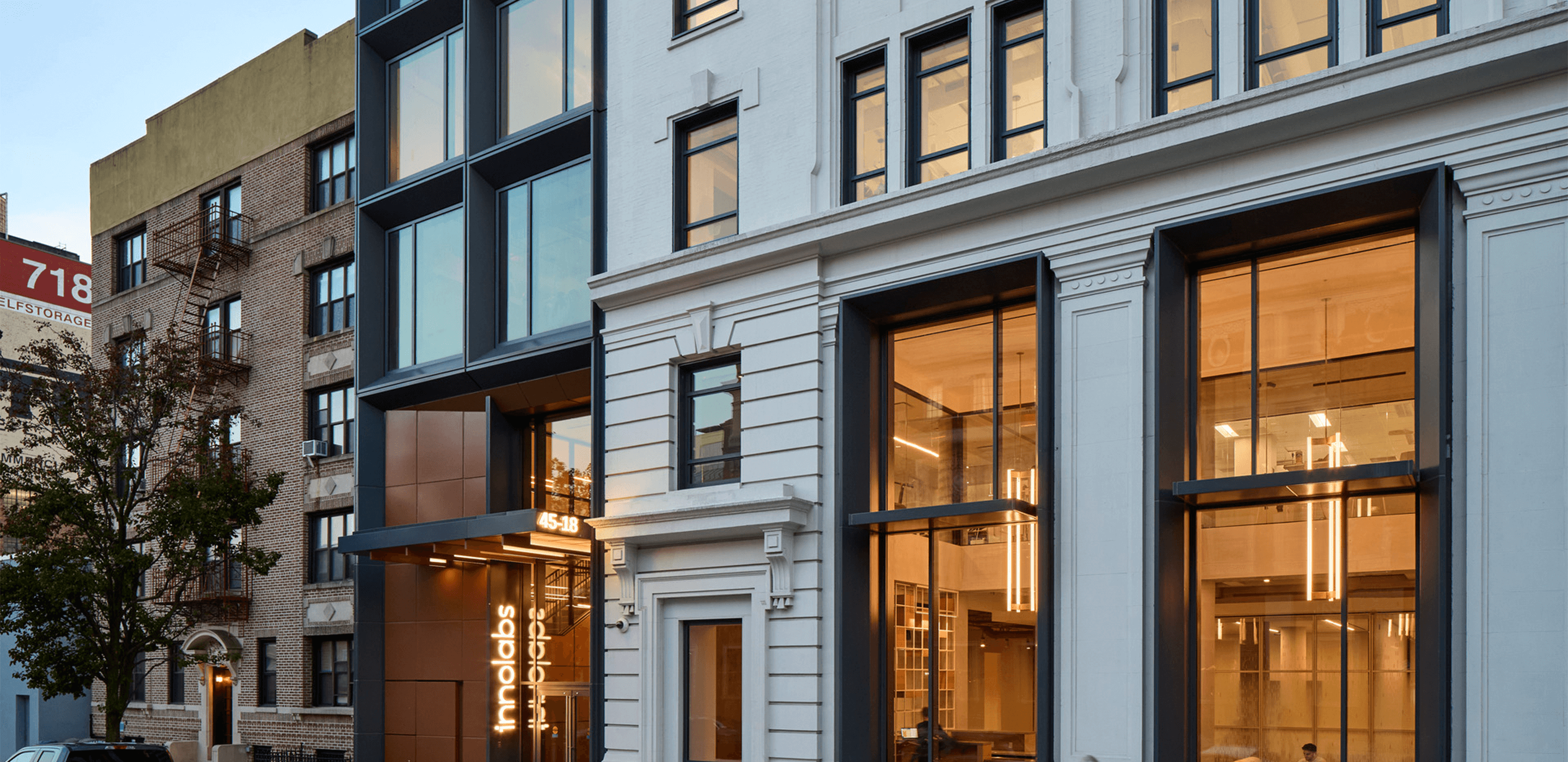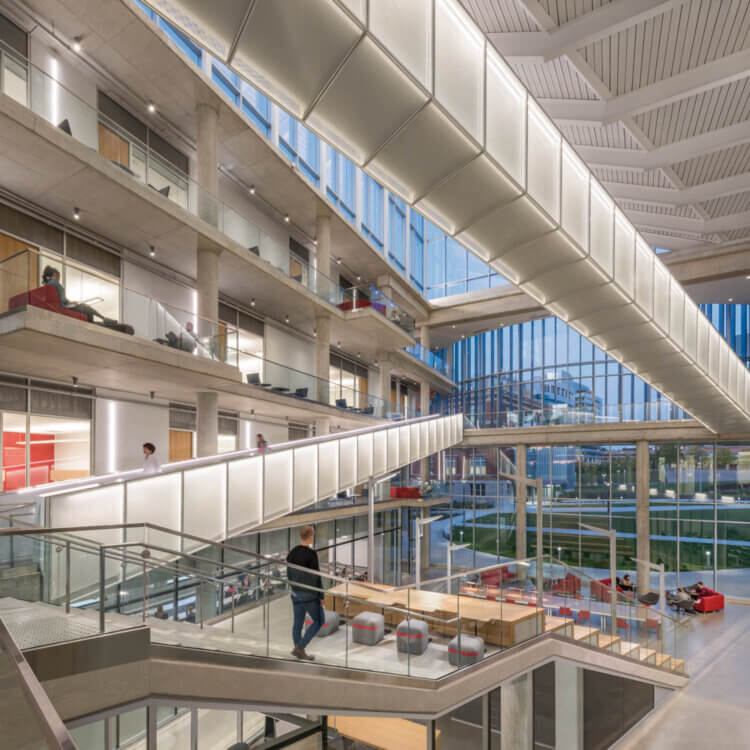In other words, bustling urban areas that offer entertainment, dining, and shopping in addition to housing and employment options are real attractors, particularly in an industry that relies on in-person work. Unlike office buildings, where teams from different companies rarely mingle, tenants in an R&D building—even one hosting many different commercial enterprises—tend to seek each other out, collaborate, and create a community.
Here are four lab buildings that offer cutting-edge, flexibly designed research facilities in addition to connections to the broader community and a lively mix of services and activities at the workplace and beyond.
